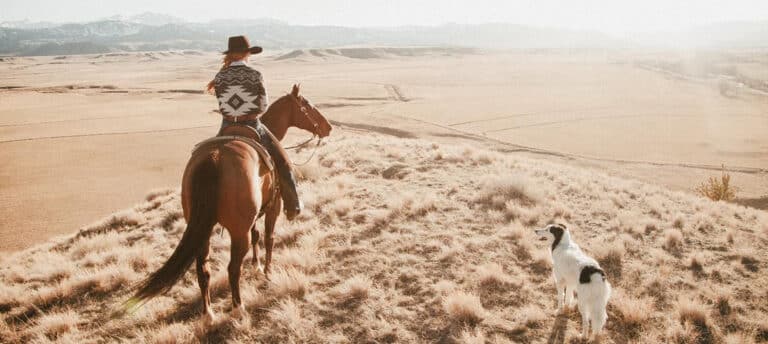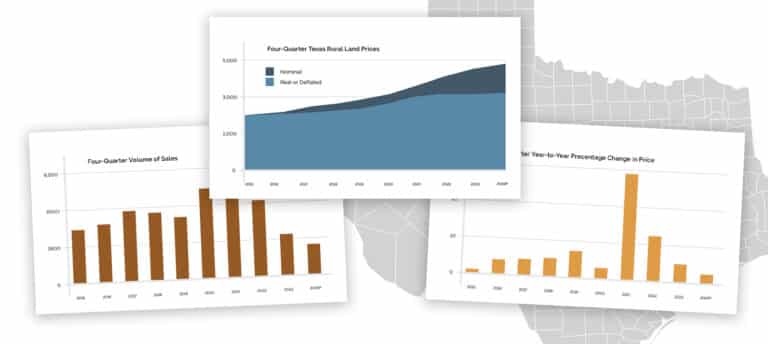National parks are often seen as the quintessential summer vacation destination, but many are equally—if not more—appealing in winter. In some cases, the enjoyment lies in getting away from cold and snow to explore parks in more temperate climates; in others, winter itself is the main attraction, with a distinct seasonal beauty, outdoor recreation opportunities, and few crowds.
Here are our picks for nine great parks to explore in winter.
Yellowstone National Park | WYOMING, IDAHO & MONTANA

Only a fraction of Yellowstone’s millions of annual visitors come in winter, making this an ideal time to explore without crowds. It also happens to be one of the park’s most beautiful seasons. The park’s famous geysers are more dramatic in the cold, their steam often turning to ice and creating amazing formations on surrounding trees and rocks. Winter offers good chances of spotting the park’s famous wolves, as well other wildlife such as bison, elk, moose, foxes, and coyotes.
Most park roads are closed to cars in winter, but there’s access to Mammoth Hot Springs through the northeast entrance. Various roads and trails are open for cross-country skiing and snowshoeing, as well as for snowcoach and snowmobile tours, which are an excellent way to get into the backcountry and see wildlife.
Bryce Canyon National Park | UTAH

The hoodoos of Bryce Canyon are spectacular at any time of year, but they take on an extra layer of beauty when dusted with snow. The contrast of red rock and white snow against the evergreen forests and generally blue skies creates a palette of vivid colors, with few crowds to mar your enjoyment of the landscape.
Cross-country skiing and snowshoeing are wonderful ways to experience the park in winter. Crisp, dry air and brilliantly clear skies also make for extraordinary stargazing. Park rangers offer guided daytime and full-moon snowshoe hikes, as well as occasional astronomy sessions.
Grand Canyon National Park | ARIZONA

Winter may just be the best time to see the Grand Canyon, as the crowds that descend on this immensely popular park in summer are noticeably absent during the colder months. The North Rim is closed in winter, but the South Rim remains open year-round, with free shuttle service between major points of interest. Though mornings may start out foggy, the skies generally clear to bright afternoon sunshine, and the season’s softer light enhances the various hues in the rock, with snow often crowning the ridges.
Hiking options are plentiful, from the Bright Angel Trail, which offers panoramic views, to the more strenuous trek to Phantom Ranch on the canyon floor, where temperatures are up to 20 degrees warmer than at the rim. Other winter activities include mule rides on the Rim Trail, scenic train trips on the Grand Canyon Railway, and cross-country skiing along the South Rim.
Yosemite National Park | CALIFORNIA

Yosemite is enchanting in all seasons, but in the winter you have the magic almost to yourself. Snow blankets mountain peaks, streams and waterfalls glitter with ice, and thick fog adds an element of mystery to the park’s iconic landscapes. Although some roads are closed in winter, many miles of trails are open for snowshoeing and cross-country skiing. California’s oldest ski area, the Yosemite Ski & Snowboard Area (formerly Badger Pass), has 10 downhill runs of varying difficulty, as well as tubing and sledding.
In the Yosemite Valley, Half Dome and Glacier Point provide a stunning backdrop for outdoor ice skating, a Yosemite tradition since 1928. As spring approaches, warmer weather brings opportunities to explore the park by bike, without the crowds of summer.
Death Valley National Park | CALIFORNIA
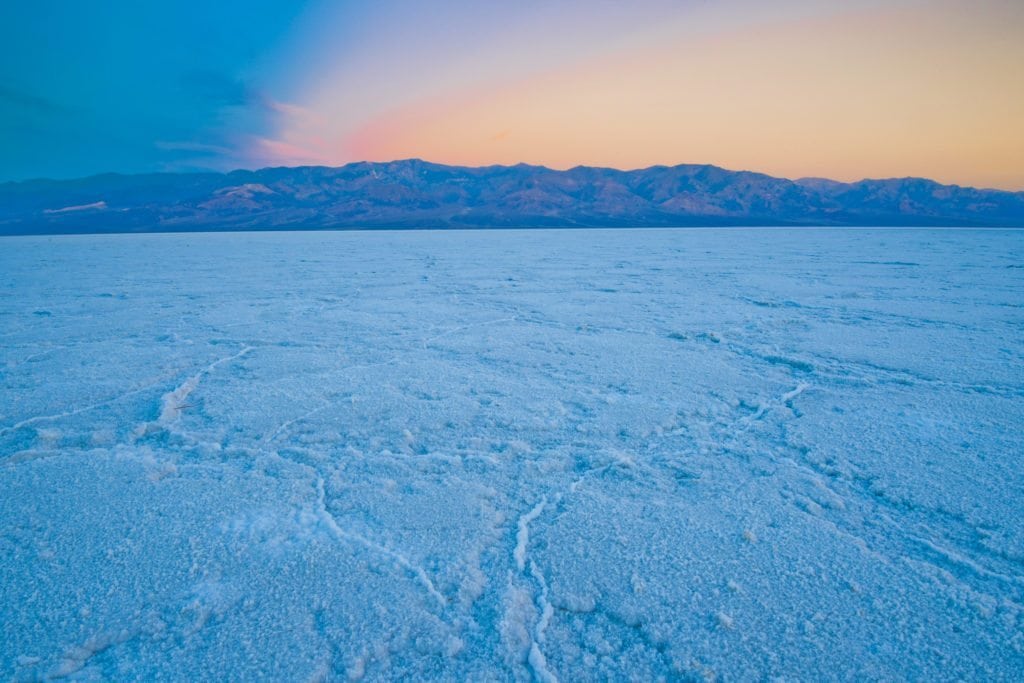
The driest, lowest, and hottest place in North America, Death Valley swelters during the summer, but in winter abundant sunshine and comfortable daytime temperatures create ideal conditions for exploring the park’s canyons, sand dunes, peaks, and craters. Soft winter light and excellent stargazing add to the appeal. Various astronomy-related events are held during the winter months.
Mid-February to mid-April is the height of the wildflower season, with colorful blooms brightening the desert floor. Visitor numbers also peak during this time, so plan accordingly. The weeks between Thanksgiving and Christmas are the least crowded time of year.
Rocky Mountains National Park | COLORADO
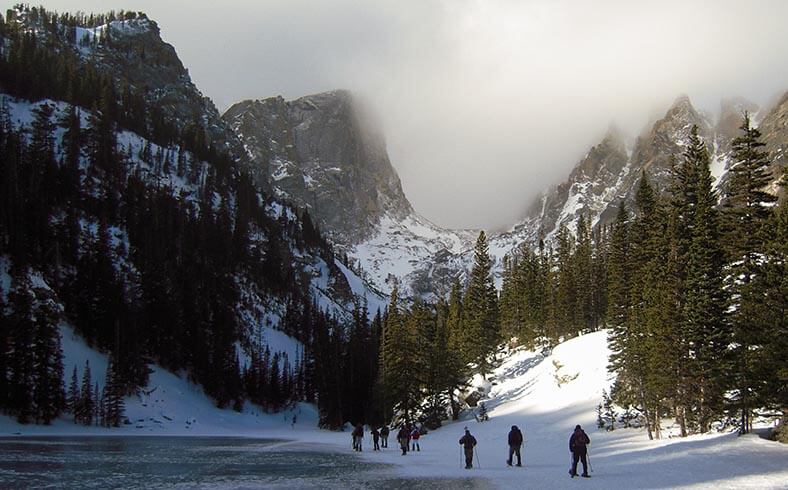
More low-key than Colorado’s big ski resorts, Rocky Mountains National Park offers excellent opportunities for winter adventures. With more than 60 snow-clad peaks over 12,000 feet, the park is a world-class destination for ice climbing and winter mountaineering. Colorado Mountain School in Estes Park offers instruction and guiding.
For less technical snowy fun, there’s sledding on the bunny hill at the former Hidden Valley Ski Area, as well as abundant snowshoeing and cross-country skiing throughout the park. Rangers lead free guided snowshoe programs regularly. Hiking without snowshoes is often possible even in winter at lower elevations on the park’s east side. Winter also offers good chances of spotting wildlife such as elk, moose, mule deer, coyotes, and bighorn sheep.
Olympic National Park | WASHINGTON
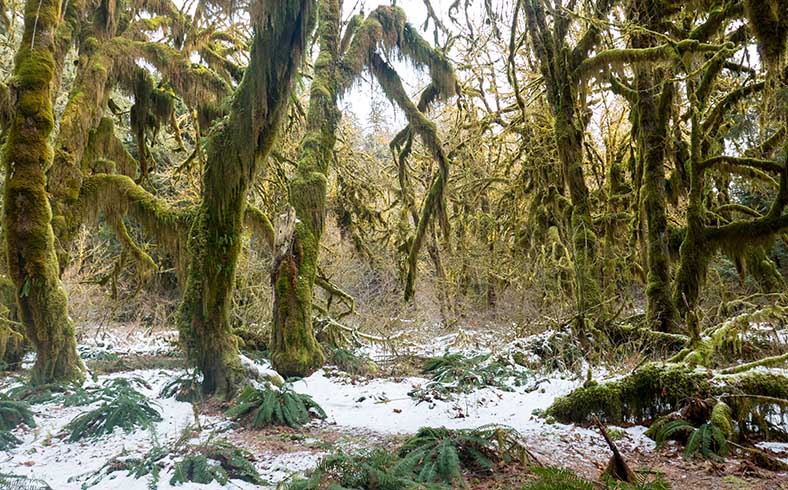
Winter is the rainy season in Washington’s Olympic National Park, but don’t let that deter you. With the added moisture, the park’s temperate rainforests take on even more vivid shades of green, and mosses and lichens proliferate. Winter is also the season for storm watching along the Pacific coast as huge waves lash the shore, tossing driftwood logs around like matchsticks. On calmer days, the varied coastline offers everything from beach walks to tidepooling.
In the park’s interior, the Olympic Mountains rise to heights of up to 7,980 feet. Hurricane Ridge is the place to go for downhill and cross-country skiing, snowshoeing, snowboarding, sledding, and tubing among the sub-alpine forests and meadows. It’s open Friday through Saturday, weather permitting.
Big Bend National Park | TEXAS
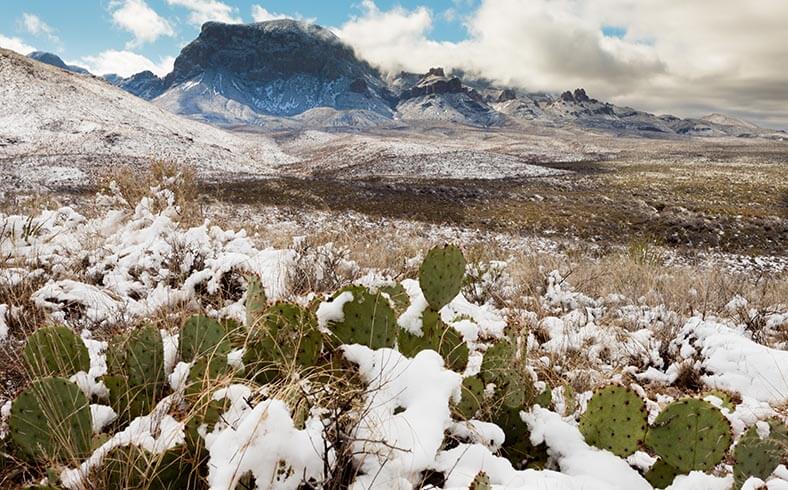
Named for the sweeping curve of the Rio Grande that forms the park’s southern border, Big Bend boasts diverse terrain, with elevations ranging from about 1,800 feet along the river to nearly 8,000 feet in the Chisos Mountains. Generally mild temperatures make winter a good time to hike or bike the nearly 200 miles of desert and mountain trails, though it’s best to be prepared for varying conditions, especially at higher elevations. Float trips on the Rio Grande are offered year-round and are a great way to see the park’s canyons.
Big Bend’s remoteness means exceptionally dark skies and outstanding stargazing. Free ranger-led activities include various astronomy-related programs. The park’s location and variety of habitats also make it an excellent year-round birdwatching destination.
Everglades National Park | FLORIDA
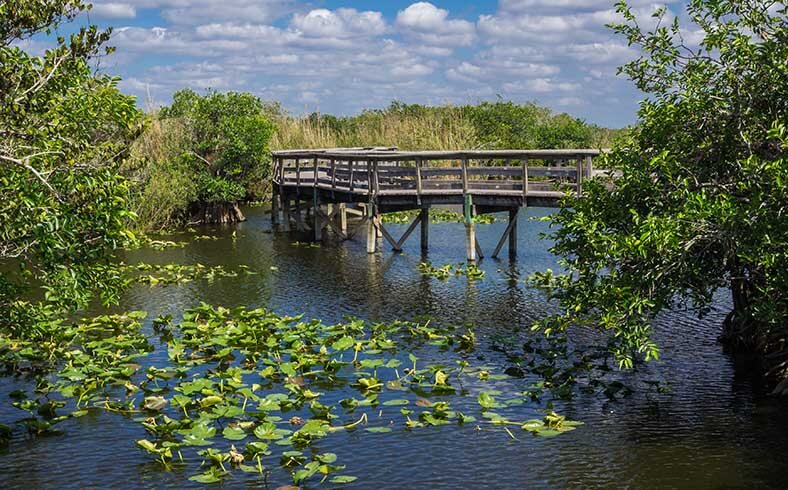
November through April is the dry season in southern Florida, with average high temperatures in the 70s, low humidity, and few mosquitos. The Everglades are the only place where you can see both crocodiles and alligators in the wild, along with a host of other wildlife, which becomes easier to spot as water levels drop and animals congregate around water holes. This is also the best time of year for birding, with many migratory species wintering or stopping over in the area.
Hiking and biking are also at their best in winter. Park rangers lead night walks on Anhinga Trail, as well as backcountry canoe excursions and boat tours. You can also rent canoes and kayaks or launch your own for independent exploration of this vast wetland wilderness.

